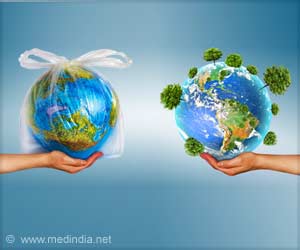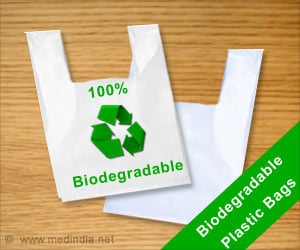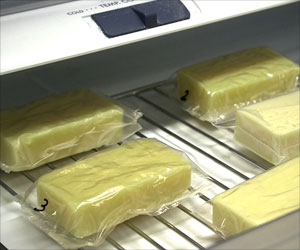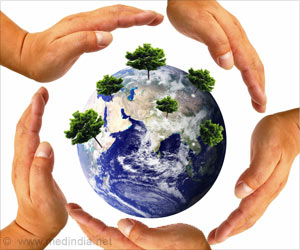Biodegradable plastic blends have been shown to decompose under various conditions like home-composting and anerobic conditions offering new options for their disposal.
- Scientists show that specific blends of plastic can biodegrade under diverse environments
- A combination of poly lacticacid and polycaprolactone decomposed thoroughly to carbon dioxide, biomass and water under typical home-composting conditions and a majority of the experimental plastics and blends decomposed under conditions of anerobic digestion producing high output biogas
- While biodegradable plastic blends could create new possibilities, they need careful post-consumer management
Pollution caused by plastic waste can be addressed by creating biodegradable plastics but the ones present today often lack the flexibility, strength or toughness of conventional plastics. Blending different types of bioplastics can offer improved characteristics and help achieve commercially functional properties; however, the environmental fate of these blends is unknown.
Poly (lactic acid) or polylactic acid or polylactidepolylactide (PLA) is one of the world’s best-selling biodegradable plastics and had the second highest consumption volume of a bioplastic. A bioplastic can be made from biobased or renewable sources and does not necessarily have to be biodegradable.
PLA is bioactive polyester derived from renewable resources. In the United States and Canada PLA is made out of cornstarch, in Asia it is made out of cassava roots, chips or starch, and in the rest of the world it is produced from sugarcane; however, it requires high temperatures for breakdown and is not home-compostable.
The authors of the current study Tanja Narancic, Kevin O'Connor, Ramesh Babu Padamati and colleagues wanted to examine how neat polymers, like PLA, thermoplastic starch, polycaprolactone (PCL), polyhydroxybutyrate, polyhydroxyoctanoate, and poly(butylene succinate), and their blends would degrade under seven managed and unmanaged conditions. They also show how PLA blended with PCL becomes home-compostable.
Study
The researchers analyzed the fates of 15 different plastics or blends under two kinds of degrading conditions –- Managed conditions, such as composting and anerobic digestion
- Unmanaged environments, including soil and fresh or marine water
- A blend of PLA and PCL degraded entirely to carbon dioxide, biomass and water under typical home-composting conditions
- Many of the tested plastics and blends decomposed under conditions of anerobic digestion, a process that produced high output biogas, but with 3-6 times longer degradation times compared to retention times in commercial plants
- Only two plastics, polyhydroxybutyrate (PHB) and thermoplastic starch (TPS) broke down completely in soil and water
- All the plastics and their blends degraded with industrial composting
- Tanja Narancic, Steven Verstichel, Srinivasa Reddy Chaganti, Laura Morales-Gamez, Shane T. Kenny, Bruno De Wilde, Ramesh Babu Padamati, and Kevin E. O’Connor “Biodegradable Plastic Blends Create New Possibilities for End-of-Life Management of Plastics but They Are Not a Panacea for Plastic Pollution”. Environmental Science & Technology Article ASAP DOI: 10.1021/acs.est.8b02963
Source-Medindia










